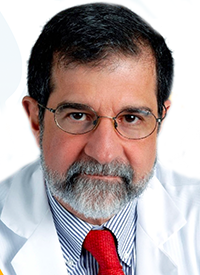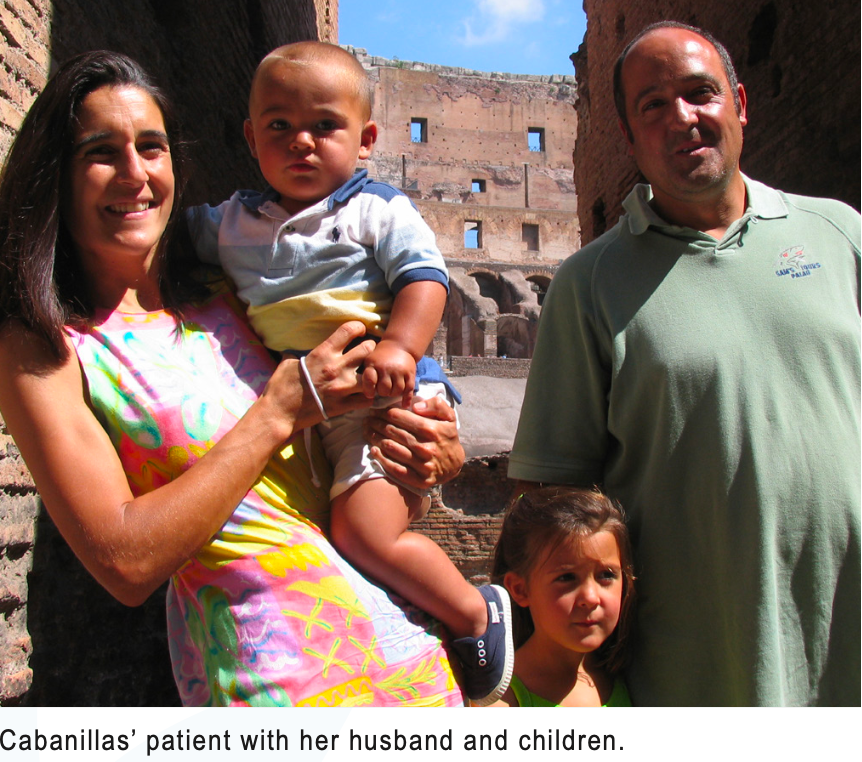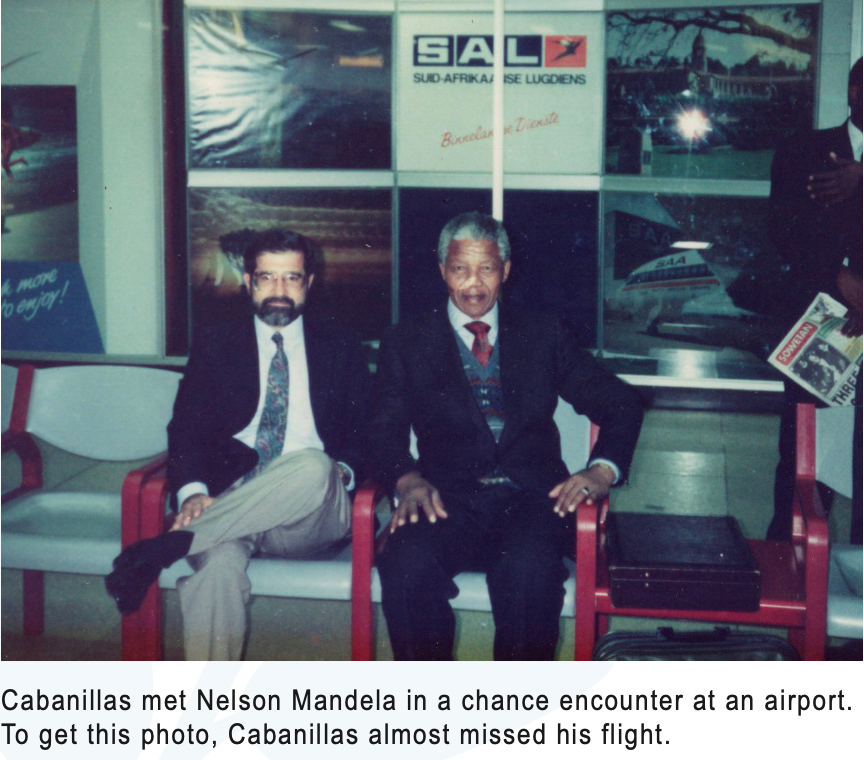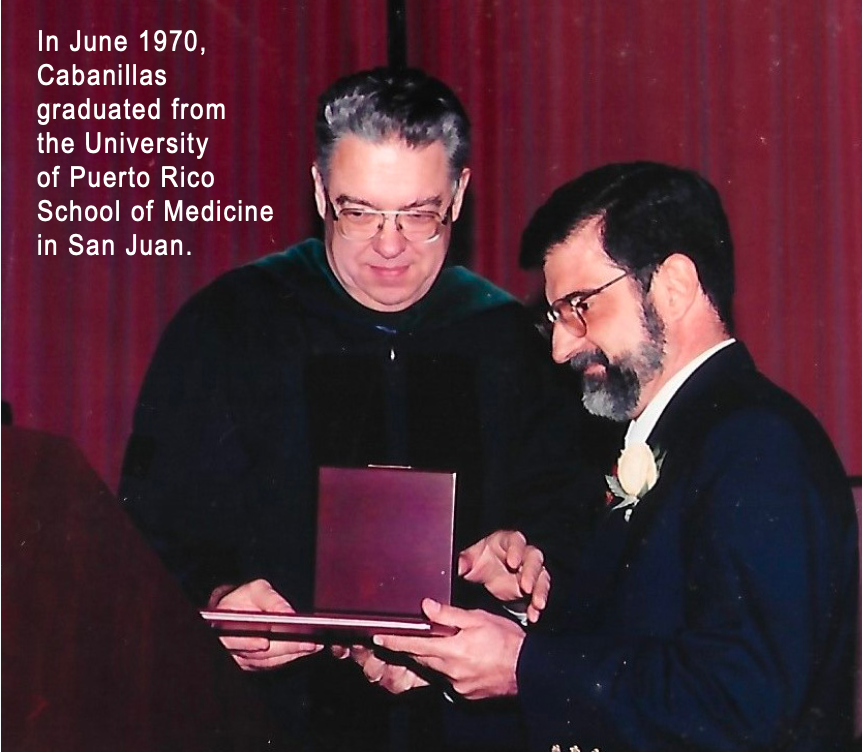Redefining Research Practices in Search of a Cure
Fernando Cabanillas, MD, a mentor and leader in the lymphoma field, is being recognized for his contributions to the hematologic oncology space.
Fernando Cabanillas, MD

Fernando Cabanillas, MD, did not know that a chance encounter at an airport in Spain would redefine how he saw and interacted with patients for the better. In 1995, he met a 17-year-old patient from Spain, whom he diagnosed with what is now called low-grade follicular lymphoma. At the time, Cabanillas was working on a cure for the disease but realized it wasn’t the physical treatment that was the issue, but rather how the medical world was defining the specific type of cancer and its curability.
Cabanillas, who was a physician at The University of Texas MD Anderson Cancer Center, was approached at the airport by the patient’s father, who asked for help. To this day, Cabanillas isn’t sure how the father found him there but is grateful to have met the family and to have been a part of their lives.
Cabanillas accepts the award for the 2023 Giant of Cancer Care in lymphoma.

The patient and her family flew to MD Anderson for treatment and temporarily moved to Texas while she underwent therapy. With the diagnosis of stage IVB follicular lymphoma, Cabanillas enrolled the patient in a phase 2 clinical trial using alternating triplet therapy.1
The trial utilized 3 non–cross-resistant combinations, which were alternated for 9 cycles. The combination included cyclophosphamide, doxorubicin, vincristine, and prednisolone (CHOP); mesna, ifosfamide, mitoxantrone, and etoposide (MINE); and doxorubicin, methylprednisolone, cisplatin, and cytosine arabinoside (ASHAP).
The patient achieved clinical and molecular complete remission in 1997, but in 1998 she relapsed and was treated with the then-newly approved rituximab (Rituxan), and has been in remission since. His patient, with whom he keeps in touch often, is now aged 45 years, a mother of 2, and a veterinarian. Cabanillas was even invited to her wedding. When the patient and her family heard that he was a recipient of the Giants of Cancer Care award, they reached out to congratulate him.
Cabanillas with Alessandra Ferrajoli, MD, of The University of Texas MD Anderson Cancer Center, and Robert Goldsmith, of MJH Life Sciences.

Forming relationships with patients like this one and being able to watch them live their lives is one of the core reasons Cabanillas is so passionate about his work.
The Road to a CURE
Cabanillas grew up in Puerto Rico in the Miramar neighborhood of San Juan, where he attended Academia del Perpetuo Socorro from kindergarten through high school. During high school, he found his passion in biology, which led him to pursue medicine. When applying for a fellowship position at the University of Puerto Rico, he happened to be on the oncology rotation and was captivated by the field, specifically, lymphoma.
“Under the guidance of Francisco Muñiz, MD, who was my mentor at that time, I was inspired to pursue a career in the field of hematology/oncology. His support and encouragement during that first-year fellowship at the university hospital led to a remarkable opportunity to continue my fellowship at MD Anderson,” said Cabanillas.
Left: Cabanillas' daughter, Marian, his wife, Myrta, and his daughter, Maria.

Since graduating from medical school, Cabanillas has held numerous positions at MD Anderson, the University of Puerto Rico, and Moffitt Cancer Center.
He was excited to return to Puerto Rico where he became the director of the Auxilio Centro de Cáncer. Cabanillas noted that he continues to work and pursue research because he is dedicated to advancing the field and patient care.
With this pursuit, Cabanillas has been involved in over 300 articles within the lymphoma and hematology space. His greatest accomplishment to date has been developing salvage therapies for low-grade indolent lymphoma, which he also noted was his greatest challenge.
Cabanillas' patient with her husband and children.

The combination of fludarabine, mitoxantrone, and dexamethasone (FND) was the salvage therapy Cabanillas specifically worked on, which led to an advancement in the field.2 The trial’s findings showed a complete response (CR) and a partial response (PR) in 47% of patients, respectively. Additionally, the median failure-free survival was 21 months in patients who achieved a CR and 9 months for those who achieved a PR.
At the time, the definition of a cure in the follicular lymphoma space was the same one being used in diffuse large B-cell lymphoma and non-Hodgkin lymphoma. Cabanillas set out to determine what a cure could mean for this population and how survival should be defined. The follow-up was conducted over 25 years and published in the Journal of Clinical Oncology, titled “Curability of Advanced Indolent or Low-Grade Follicular Lymphomas: Time for a New Paradigm?”3
“The paper was clear that not only do patients stop relapsing after 8 years, but also the subgroup of them that, if treated correctly, have a 50% cure rate, which means they stopped relapsing after 8 years. That paper summarized our experience after 25 years of research studies of indolent lymphomas,” he said.
Cabanillas met Nelson Mandela in a chance encounter at an airport. To get this photo, Cabanillas almost missed his flight.

This review aimed to examine the 2 paradigms that had been built around the treatment and management of non-Hodgkin lymphoma. This included advanced low-grade non-Hodgkin lymphoma being an incurable disorder, and aggressive non-Hodgkin lymphoma being potentially curable if a patient is disease free beyond 2 years.
Cabanillas approached these 2 schools of thought with research that was conducted to analyze whether the correct questions were being asked and therapeutic goals were being set. After looking over 25 years of research, he determined the definitions should evolve because data have shown that these disorders can be curable.
A Call Toward Mentorship
While his interests lie in advancing the field, Cabanillas has also been a mentor to many clinicians working in lymphoma. Hagop M. Kantarjian, MD, was a fellow at MD Anderson and mentored by Cabanillas. He is now a professor and department chair in the Division of Cancer Medicine, associate vice president of global affairs, and Samsung Distinguished University Chair in Cancer Medicine at MD Anderson.
In June 1970, Cabanillas graduated from the University of Puerto Rico School of Medicine in San Juan.

In a written statement, Kantarjian recalls Cabanillas as “the kindest person I knew during my fellowship, always helpful, and highly innovative. He is a hero and role model to many of us in the field of research in liquid tumors.”
Being a mentor is something Cabanillas holds in high regard. He believes that it’s important to impart his knowledge, experience, and scientific curiosity to the younger generation.
During his time at MD Anderson, he was mentored by Emil J. Freireich, MD, a trailblazer in the realm of leukemia. He was introduced to Freireich on the first day of his fellowship at MD Anderson. “They greeted us with a warm welcome and referred to us as geniuses,” Cabanillas said. “I had never regarded myself as a genius. When faced with a decision to either resign or start acting as a genius, I chose the latter option. Without a doubt, that was Freireich’s intention. After that, he continued to challenge me. He was the one who challenged me to develop a cure for low-grade lymphoma.”
Cabarillas discussing his book "Consejos de Cabecera" which is the compilation of his weekly newspaper columns for El Nuevo. Dia. He is joined by Mayra Montero and Ana Fabian.

When asked whom he admired most professionally, Cabanillas said it was Freireich. In his acceptance speech for the Giants of Cancer Care award, Cabanillas thanked Freireich for his guidance and support, which he said was pivotal to his career.
Susan M. O’Brien, MD, a hematologic oncologist from the University of California, Irvine, and also a 2020 Giants of Cancer Care inductee in leukemia, met Cabanillas when she was a fellow at MD Anderson and learned much about lymphoma under his mentorship. As a physician, she described him as “knowledgeable and compassionate,” noting that he has been part of groundbreaking research in the lymphoma space.
Cabanillas has surrounded himself with great mentors and mentees in the field of lymphoma, but from a personal standpoint, he admires Nelson Mandela because of his leadership and dedication to promoting peace throughout the world. Cabanillas likes to recall meeting Mandela at an airport in South Africa. He almost missed his flight because of an extensive security search by Mandela’s team, but he risked it to have his photo taken with his idol.
A Work-Life Balance
While Cabanillas is proud of all his accomplishments in the cancer setting, he is even more proud of the life he has built with his wife and their children.
Cabanillas and his students when he was a visiting professor in Spain 1993.

Cabanillas’ wife, Myrta, “dedicated herself 100% to raising the children.” His older daughter, Marian, is the CEO of United HealthCare Community Plan of Texas, where she focuses on addressing disparities, promoting diversity, and bringing equity and inclusion to the community.
Maria, his younger daughter, is an oncologic endocrinologist at MD Anderson as well as a tenured professor and director of clinical research in the Department of Endocrine Neoplasia. She focuses on the management of anaplastic thyroid carcinoma.
When asked if his daughters followed his footsteps into the medical field/industry, Cabanillas said he believes they did as they watched him as a clinician and researcher while they were growing up. He jokes that Maria went into endocrinology so she didn’t have to compete with him.
Additionally, in 2018, Cabanillas released a book titled “Consejos de Cabecera” which compiled all of his newspaper columns. The columns cover a variety of topics across the medical field.
When Cabanillas isn’t at the clinic, he can be found writing a weekly column for his local newspaper, El Nuevo Día, or cohosting a twice-weekly radio program about the effect of COVID-19 on Puerto Rico.
He also enjoys reading books regarding local politics or featuring magical realism. His current read is “One Hundred Years of Solitude” by Gabriel García Marquez, who Cabanillas notes is considered to have created the idea of magical realism. “Everyone thinks that if you come from or have lived in Latin America, that [magical realism] is part of our thinking. The culture is a mixture of reality and fantasy, and that describes Latin America better than anything,” Cabanillas said.
On weekends, Cabanillas and his family can often be found at their country home a 30-minute drive outside San Juan. His house is located on an acre of land that boasts a variety of flowers including orchids and bromeliads. He said his weekend escape has “helped me relax and appreciate the beauty of nature.”
Cabanillas wants his fellow islanders from Puerto Rico to know that his Giant of Cancer Care award is for them and that he would not have achieved or been given these opportunities without their support.
References
- Cabanillas F, Rodriguez-Diaz Pavón J, Hagemeister FB, et al. Alternating triple therapy for the treatment of intermediate grade and immunoblastic lymphoma. Ann Oncol. 1998;9(5):511-518. doi:10.1023/a:1008214629544
- McLaughlin P, Hagemeister FB, Romaguera JE, et al. Fludarabine, mitoxantrone, and dexamethasone: an effective new regimen for indolent lymphoma. J Clin Oncol. 1996;14(4):1262-1268. doi:10.1200/JCO.1996.14.4.1262
- Cabanillas F. Curability of advanced indolent or low-grade follicular lymphomas: time for a new paradigm? J Clin Oncol. 2013;31(1):14-16. doi:10.1200/JCO.2012.41.7527



